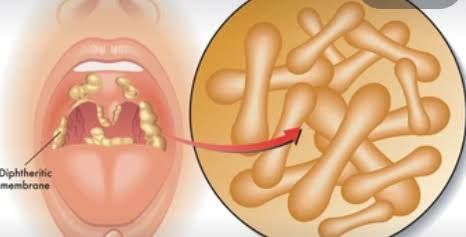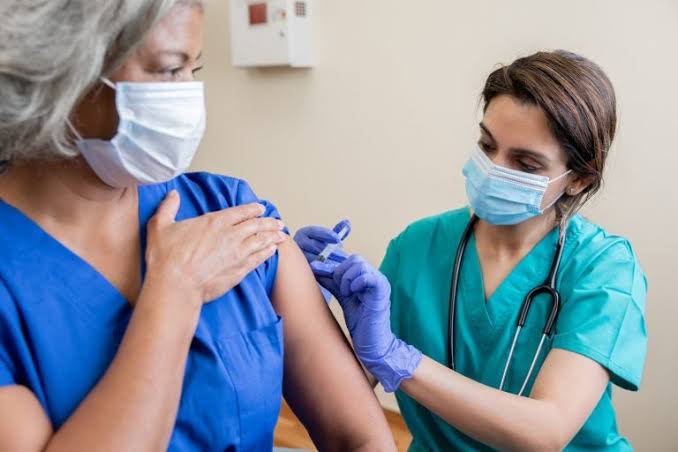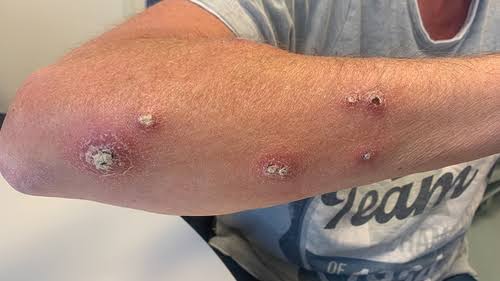
Diphtheria is a severe, vaccine-preventable bacterial infection that has historically been a major cause of childhood morbidity and mortality worldwide. Although routine immunization has made it rare in many countries, the disease persists in regions with low vaccination coverage and poses a constant threat of resurgence, even in highly vaccinated populations where immunity may wane over time. Understanding its definition, the dynamics of its transmission through the epidemiological triad, its global epidemiology, and the robust prevention strategies available is crucial for public health professionals and clinicians to effectively control this potent disease.
Defining Diphtheria: A Toxin-Mediated Disease
Diphtheria is an acute infectious disease caused by toxigenic strains of the bacterium Corynebacterium diphtheriae, a gram-positive, non-motile bacillus. The defining characteristic of the disease is not the bacterial infection itself, but the potent exotoxin it produces. Only strains of C. diphtheriae that have been infected by a specific bacteriophage (a virus that infects bacteria) carrying the tox gene are capable of producing this diphtheria toxin. This toxin is responsible for the local tissue necrosis and the severe systemic complications that make the disease life-threatening.
The clinical presentation of diphtheria can be broadly categorized into two main forms: respiratory and cutaneous.
- Respiratory Diphtheria: This is the classic and most severe form of the disease. Following an incubation period of 2-5 days, the infection typically begins in the upper respiratory tract. Initial symptoms include a sore throat, low-grade fever, malaise, and difficulty swallowing. The hallmark of respiratory diphtheria is the formation of a dense, adherent, greyish-white pseudomembrane on the tonsils, pharynx, or larynx. This pseudomembrane is composed of dead cells, fibrin, bacteria, and inflammatory cells. Attempts to remove it can cause bleeding. If the membrane extends into the larynx or trachea, it can cause airway obstruction, leading to suffocation and death. In severe cases, marked swelling of the lymph nodes in the neck results in a characteristic “bull neck” appearance (cervical adenopathy).
- Systemic Complications: The diphtheria toxin can be absorbed into the bloodstream and distributed throughout the body, causing severe damage to distant organs. The most common and serious complications are myocarditis (inflammation of the heart muscle), which can lead to heart failure and arrhythmias, and neuropathy (nerve damage), which can cause paralysis, particularly of the palate, eye muscles, and limbs. These complications typically appear one to two weeks after the onset of respiratory symptoms.
- Cutaneous Diphtheria: This form is more common in tropical climates and among populations with poor hygiene. It manifests as chronic, non-healing skin ulcers, often covered by a greyish membrane. While cutaneous lesions are generally less severe than the respiratory form and rarely lead to systemic complications, they serve as a significant reservoir for the bacteria and can transmit the infection to others.
Agent, Host, Environment, and Modes of Transmission
Understanding the interplay between the infectious agent, the susceptible host, and the environment—the epidemiological triad—is fundamental to comprehending how diphtheria spreads.
Agent Factors: The agent, Corynebacterium diphtheriae, possesses several key characteristics. Its most critical virulence factor is the ability to produce the diphtheria exotoxin. This protein synthesis inhibitor is extremely potent and is responsible for all major clinical manifestations. The bacterium can survive for weeks in the environment on fomites (inanimate objects) if protected from drying and sunlight, contributing to its persistence. While C. diphtheriae is the primary cause, toxigenic strains of C. ulcerans and C. pseudotuberculosis can, in rare cases, cause a similar clinical illness.
Host Factors: The single most important host factor is immunity. Individuals who are unvaccinated, incompletely vaccinated, or whose vaccine-induced immunity has waned are highly susceptible. Immunity is acquired through vaccination with the diphtheria toxoid or by surviving a natural infection. Age is another critical factor; historically a pediatric disease, diphtheria now increasingly affects adolescents and adults in areas where childhood vaccination is common but booster doses are neglected. Other host factors that increase susceptibility include malnutrition, crowded living conditions, and underlying immunodeficiency.
Environmental Factors: Environmental conditions significantly influence transmission. Overcrowding, such as in households, schools, refugee camps, or institutional settings, facilitates the close person-to-person contact required for respiratory droplet spread. Socioeconomic factors, including poverty and lack of access to healthcare and vaccination services, are major drivers of diphtheria persistence. In temperate climates, diphtheria incidence often peaks during the colder, winter months. Poor sanitation and hygiene can contribute to the prevalence of cutaneous diphtheria, which in turn can seed respiratory outbreaks.
Modes of Transmission: The primary reservoir for C. diphtheriae is humans, including both symptomatic individuals and asymptomatic carriers. Transmission occurs through several routes:
- Person-to-Person via Respiratory Droplets: This is the most common mode of transmission. When an infected person coughs or sneezes, they expel droplets containing the bacteria, which can be inhaled by a susceptible individual nearby.
- Direct Contact: Transmission can occur through direct contact with respiratory secretions (e.g., saliva) or exudate from the skin lesions of cutaneous diphtheria.
- Fomites: Although less common, transmission can occur through contact with articles contaminated with secretions from an infected person.
Epidemiology and Prevention of Diphtheria
Epidemiology: Before the widespread introduction of a vaccine in the mid-20th century, diphtheria was a feared endemic and epidemic disease globally, causing hundreds of thousands of cases and tens of thousands of deaths annually, primarily among children. The success of routine childhood immunization programs, such as the World Health Organization’s Expanded Programme on Immunization (EPI), has drastically reduced its global incidence.
Today, diphtheria is rare in developed countries with high, sustained vaccination coverage. However, it remains endemic in many low- and middle-income countries, particularly in parts of Southeast Asia, Africa, South America, and the Eastern Mediterranean region. Outbreaks continue to occur, often driven by disruptions in vaccination services due to conflict, political instability, or natural disasters. Recent notable resurgences have been reported in Venezuela, Yemen, and among Rohingya refugees in Bangladesh, highlighting the fragility of its control. These outbreaks are characterized by a shift in age distribution, with a significant proportion of cases occurring in older children, adolescents, and adults whose immunity has waned since their primary childhood vaccinations.
Prevention and Control Strategies: The control of diphtheria relies on a multi-pronged public health approach, with vaccination as its cornerstone.
- Primary Prevention: Vaccination: The diphtheria vaccine is a toxoid, meaning it is a purified but inactivated form of the diphtheria toxin. It stimulates the body to produce protective antitoxin antibodies without causing the disease. The vaccine is highly effective and is typically administered in combination with vaccines for tetanus and pertussis (e.g., DTaP for children, Tdap/Td for adolescents and adults). The WHO recommends a primary series of three doses in infancy, followed by booster doses in early childhood, adolescence, and adulthood (typically every 10 years) to maintain protective immunity throughout life.
- Secondary Prevention: Early Diagnosis and Treatment: Since the diphtheria toxin can cause irreversible damage, prompt clinical diagnosis and immediate treatment are critical. Treatment involves a two-part strategy:
- Diphtheria Antitoxin (DAT): This is the most crucial life-saving intervention. DAT is administered to neutralize any circulating toxin that has not yet bound to body tissues. Its efficacy is highest when given early in the course of the illness.
- Antibiotics: Antibiotics, such as penicillin or erythromycin, are given to eradicate the C. diphtheriae bacteria, thereby halting further toxin production and rendering the patient non-infectious.
- Tertiary Prevention and Outbreak Control: In an outbreak setting, robust public health measures are essential to stop transmission. This includes:
- Isolation: Patients with suspected or confirmed diphtheria should be placed in respiratory droplet isolation to prevent spread.
- Contact Management: All close contacts of a case should be identified, clinically evaluated, and have nose and throat swabs taken for culture. They should receive a booster dose of a diphtheria toxoid-containing vaccine and be given prophylactic antibiotics to prevent them from developing the disease and to eliminate asymptomatic carriage.
- Surveillance: Strong disease surveillance systems are needed to rapidly detect, report, and investigate cases, enabling a swift and effective public health response.
In conclusion, diphtheria remains a formidable disease, driven by a potent bacterial toxin. Its transmission is dictated by a classic interplay of the agent, host immunity, and environmental factors. While it has been successfully controlled in many parts of the world, its persistence in endemic areas and the potential for resurgence underscore the absolute necessity of maintaining high and equitable vaccination coverage across the entire lifespan. Sustained global commitment to routine immunization, robust surveillance, and rapid response capabilities is the only way to ensure that this once-devastating disease remains a rarity of the past rather than a threat to the future.
References:
- World Health Organization (WHO). (2023). Diphtheria. [Online] Available at: https://www.who.int/news-room/fact-sheets/detail/diphtheria
- Centers for Disease Control and Prevention (CDC). (2022). Diphtheria. In: Epidemiology and Prevention of Vaccine-Preventable Diseases (The Pink Book), 14th ed. Washington D.C.: Public Health Foundation.
- Truelove, S. A., et al. (2020). Clinical and epidemiological aspects of diphtheria: a systematic review and pooled analysis. Clinical Infectious Diseases, 71(1), 89-97.
- Clarke, K. E. N. (2017). Review of Diphtheria: The Re-emergence of a Toxin-Mediated Disease. Tropical Medicine & International Health, 22(6), 674-684.
- European Centre for Disease Prevention and Control (ECDC). (2022). Factsheet about diphtheria. [Online] Available at: https://www.ecdc.europa.eu/en/diphtheria/facts







